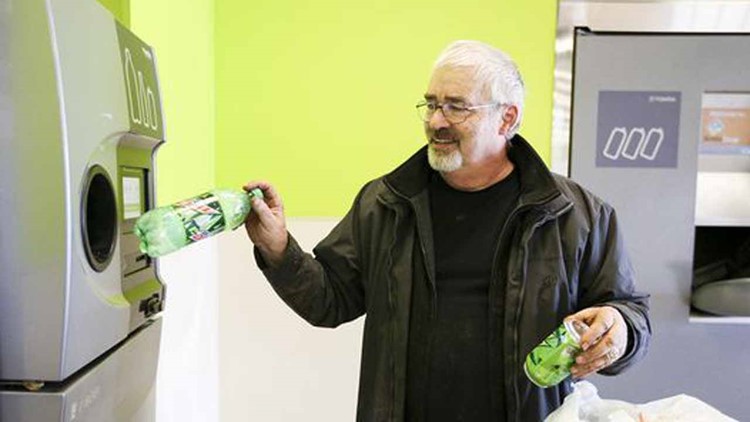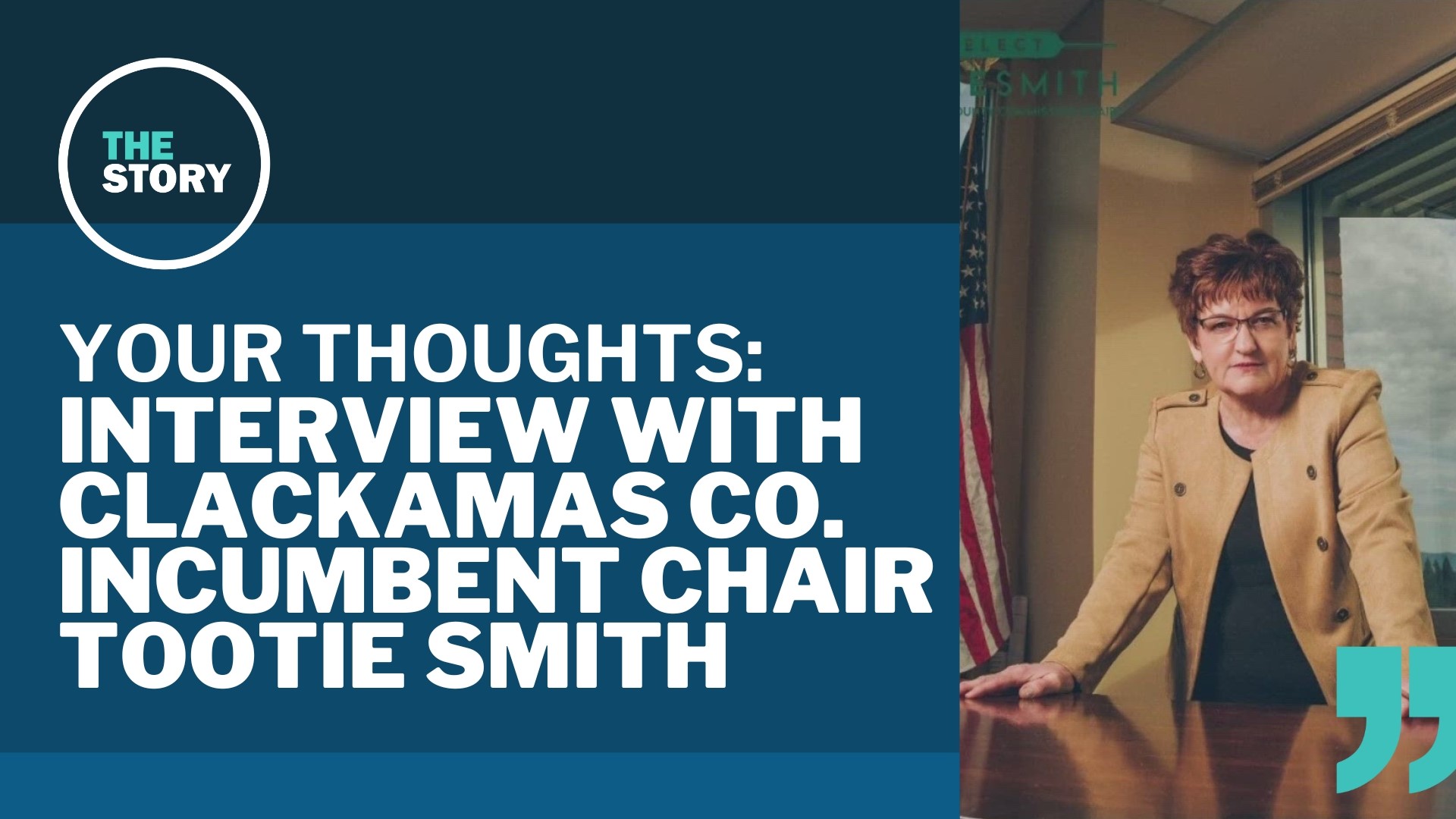If you have a bag of soda cans, beer bottles and water containers accumulating in the garage, you might want to wait to redeem them — at least for another nine days.
On April 1, Oregon's 5-cent bottle deposit refund will increase for the first time, doubling to 10 cents, in an effort to perk up lagging redemption rates.
The state became the first in the country to introduce a bottle bill back in 1971.
Backers of the bill sought to encourage the recycling of carbonated and malt beverages, the most common containers disposed of along Oregon highways, trails and beaches.
More than a billion beverage containers are recycled in Oregon every year. According to the Department of Environment Quality, recycling those beverage containers saved 3 trillion BTUs of energy and also reduced greenhouse gas emissions by nearly 200,000 tons of carbon dioxide equivalents — equal to the amount of carbon dioxide produced by 40,000 cars.
The bottle bill has also substantially reduced beverage container litter, leaving roadsides, parks and public lands much cleaner, according to the DEQ.
For more than a decade, Oregon's average return rate hovered above 90 percent. By the 1990s, however, rates began to dip. DEQ officials said while there are a few issues behind the lagging rates, one simple one is that the redemption value has not kept up with inflation.
The nickel refund in 1971 would be equal to about 31 cents in buying power in 2017, according to the Bureau of Labor Statistics. If adjusted for inflation, a $1.86 deposit should be tacked on to a six pack of beer instead of the actual 30 cents.
The DEQ stated there is strong evidence that suggests the size of deposits affects the return rate of containers. Michigan, which has a minimum 10-cent deposit, has a return rate about 90 percent — the highest of all states with bottle bills.
Over the years, changing trends, like the surge of the popularity of plastic water bottles, have added containers to bottle drop list.
Return rates vary significantly for different types of bottles and cans. Just under 71 percent of metal containers are returned for refund. About 67 percent of glass containers are returned, and a little over half of plastic containers were returned.
Faced with declining rates and changing trends, the Oregon Legislature passed a law creating a Bottle Bill Task Force. The group set the return rate goal of 80 percent and suggested the deposit increase from a nickel to a dime.
Years of failed bills and industry infighting ensued, but finally, in 2011, the legislature passed a bill requiring the redemption value of cans, glass bottles and plastic containers to increase if rates dropped below the 80-percent threshold.
In 2014, the redemption rate was about 68 percent. The next year, it dipped even lower to about 64 percent. In July 2016, the Oregon Liquor Control Commission announced the time had come to increase the bottle deposit. The 10-cent deposit would take effect April 1.
On Monday, the Oregon Senate overwhelmingly passed a bill intending to smooth the transition and reduce potential waste. The bill requires a 10-cent refund for all covered containers, regardless of the value listed on the packaging, starting on April 1. Containers that list a 5-cent deposit can be sold until Sept. 30, 2018.
“This bill smooths out the transition considerably for retailers, helping them have consistency in how to implement the new deposit without wasting product or creating confusion,” said Sen. Michael Dembrow, D-Portland, in a statement. “The higher deposit amount should improve the recycling rates in the state, reducing litter statewide and providing for a cleaner environment."
But, he added, the transition brings the risk of confusion. The bill provides consumers and retailers the certainty that on April 1, the redemption value of every bottle will be 10 cents, no matter what the label says.
Studies indicate the bill would have no revenue impact and minimal fiscal impact.
Visitors at the BottleDrop Redemption Center on 4815 Commercial St. SE weren't holding out for April 1. Some already knew about the refund change, but the increase came as a surprise to most.
"I should wait," said Ryan Rogers, of Salem.
He paused before continuing to load cans and bottles into the self-serve kiosk.
About a dozen people filtered in and out of the facility.
Over the din of jostling glasses and metal, Orial and Wanda Burnell, of Turner, said they visited the drop about once a month. The increase wouldn't affect them too much, Orial said.
"It goes out, it goes in about the same," Orial said, adding, "Having a place like this is fantastic."
It had been a long time since Wanda and George Stephenson, of Salem, stopped by the redemption center. They hauled in bags full of accumulated soda cans.
"We don't throw ours away like our kids," she said.
Wanda didn't realize the same cans could bring in double the money next month. They stopped loading for a second but then continued. The incremental increase in the refund didn't seem worth derailing an errand.
Another customer remarked that the already busy redemption center could be even more hectic the first day the increase takes effect.
All Bottle Drop locations will be fully staffed and ready to serve on April 1, said Cherilyn Bertges, spokeswoman for the Oregon Beverage Recycling Cooperative. The organization is also planning several long-term changes to ensure a smooth transition.
"We are continuing to build BottleDrop Redemption Centers and are increasing the rate at which we open them," she said.
About 20 redemption centers — and dozens of retailers outside their zone radius required to accept at least some containers — are listed on the OLCC website. Two more are expected to open in 2017.
They are also launching a new program that brings a green bag drop-off program to areas that don’t have access to a BottleDrop center. The organization recently increased fundraising options for nonprofits who want to hold can and bottle drives.
A refillable beer bottle program will help Oregon brewers and the cooperative increase their stewardship of deposit materials and is a unique opportunity for the craft brew industry, Bertges said.
"Salem is unique in that it has three BottleDrop Redemption Centers that will be able to handle the expected increase in redemption volume," said Joe Gilliam, president of the Northwest Grocery Association.
The association and its members have been preparing for the change since the increase was announced in 2016.
The 10-cent deposit will put initial price pressure on products as consumers begin purchasing them under the increase, Gilliam said. Easy access to redemption centers and new features, like bag drop-offs and 120 percent grocery store credit at BottleDrop PLUS kiosks, will help Salem residents quickly recoup those costs, he added.
For questions, comments and news tips, email reporter Whitney Woodworth at wmwoodwort@statesmanjournal.com, call 503-399-6884 or follow on Twitter @wmwoodworth
What kinds of containers are currently included in Oregon’s Bottle Bill?
Water, flavored water, soda water, and mineral water
Beer and malt beverages
Carbonated soft drinks
What will be added?
Oregon Law states that effective January 1, 2018, all beverage containers except distilled liquor, wine, dairy or plant-based milk and infant formula will include a deposit. This includes:
Tea
Coffee
Hard cider
Fruit juice
Kombucha
Coconut water
*Container sizes for the newly added beverages will be 4 ounces to 1.5 liters. Smaller or larger containers for the new beverages will not require a deposit.
Source: Oregon Liquor Control Commission



